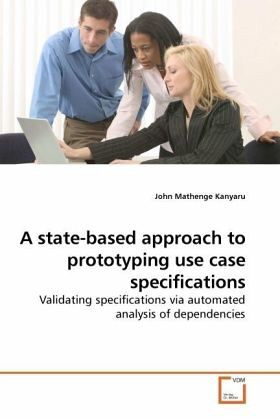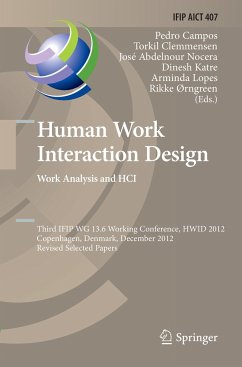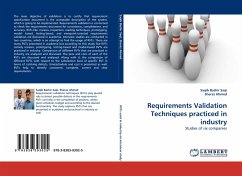
A state-based approach to prototyping use case specifications
Validating specifications via automated analysis of dependencies
Versandkostenfrei!
Versandfertig in 6-10 Tagen
45,99 €
inkl. MwSt.

PAYBACK Punkte
23 °P sammeln!
Use cases have gained wide acceptance since the standardisation of the UML by the Object Management Group (OMG) in 1997. One of the overlooked issues with use cases is their inadequacy to express intra- use case and inter-use case dependencies. The research described herein provides an enhanced structure of the use case specification where dependencies and interaction issues can be delineated as a means to validating the specification. This enhanced structure is termed the Educator approach. Additionally, presentation is made of automated support whereby the enhanced use case description can b...
Use cases have gained wide acceptance since the standardisation of the UML by the Object Management Group (OMG) in 1997. One of the overlooked issues with use cases is their inadequacy to express intra- use case and inter-use case dependencies. The research described herein provides an enhanced structure of the use case specification where dependencies and interaction issues can be delineated as a means to validating the specification. This enhanced structure is termed the Educator approach. Additionally, presentation is made of automated support whereby the enhanced use case description can be authored and enacted (animated) to reveal interactions among actors (external users) during the performance of a use case. Enaction provides visual prototypes (as opposed to reading static text) that depict the implications of the specification to the stakeholders, thereby enabling stakeholders to validate the specification. Clearly, clarification of both intra-use case and inter-use case dependencies is crucial for validating the specification against stakeholder expectations.












